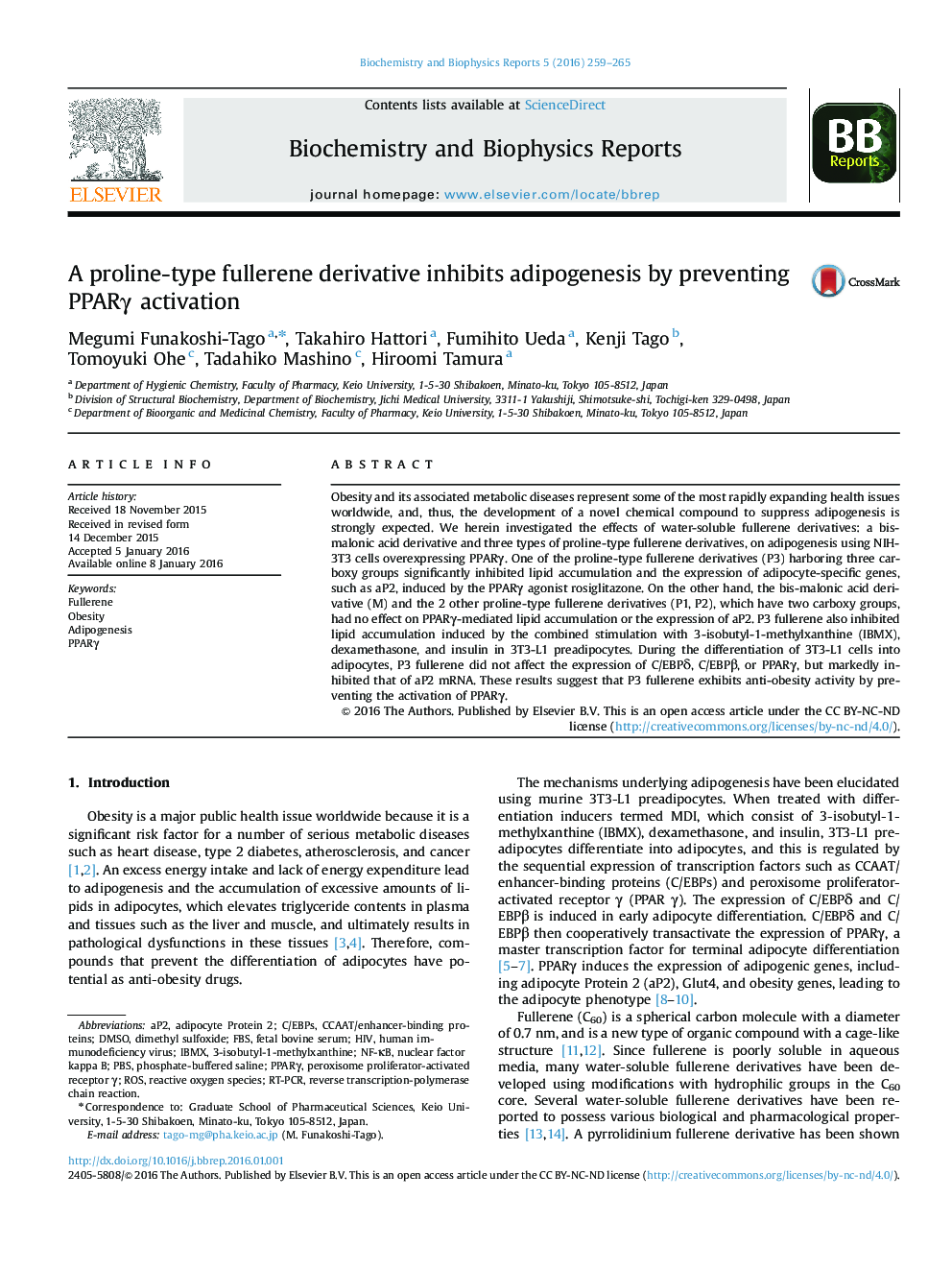| Article ID | Journal | Published Year | Pages | File Type |
|---|---|---|---|---|
| 1941729 | Biochemistry and Biophysics Reports | 2016 | 7 Pages |
•Fullerene derivative inhibits the rosiglitazone-induced adipogenesis.•Fullerene derivative inhibits the rosiglitazone-induced expression of aP2 mRNA.•Fullerene derivative inhibits adipogenesis of 3T3-L1 preadipocyte.•Fullerene derivative inhibits the activation of PPARγ in 3T3-L1 preadipocyte.
Obesity and its associated metabolic diseases represent some of the most rapidly expanding health issues worldwide, and, thus, the development of a novel chemical compound to suppress adipogenesis is strongly expected. We herein investigated the effects of water-soluble fullerene derivatives: a bis-malonic acid derivative and three types of proline-type fullerene derivatives, on adipogenesis using NIH-3T3 cells overexpressing PPARγ. One of the proline-type fullerene derivatives (P3) harboring three carboxy groups significantly inhibited lipid accumulation and the expression of adipocyte-specific genes, such as aP2, induced by the PPARγ agonist rosiglitazone. On the other hand, the bis-malonic acid derivative (M) and the 2 other proline-type fullerene derivatives (P1, P2), which have two carboxy groups, had no effect on PPARγ-mediated lipid accumulation or the expression of aP2. P3 fullerene also inhibited lipid accumulation induced by the combined stimulation with 3-isobutyl-1-methylxanthine (IBMX), dexamethasone, and insulin in 3T3-L1 preadipocytes. During the differentiation of 3T3-L1 cells into adipocytes, P3 fullerene did not affect the expression of C/EBPδ, C/EBPβ, or PPARγ, but markedly inhibited that of aP2 mRNA. These results suggest that P3 fullerene exhibits anti-obesity activity by preventing the activation of PPARγ.
Graphical abstractFigure optionsDownload full-size imageDownload as PowerPoint slide
